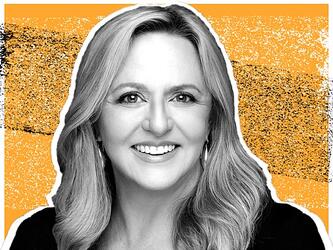If it ain't got that swing
More than a few people have asked if I regret writing last week that this isn’t a race at all. But, although I acknowledge the chances of my having to eat my hat may be slightly higher than previously, I maintain that from the polls, it isn’t really a race. The presidency is still Obama’s to lose.
Romney did not capitalise on favourable conditions early enough in the campaign to create an environment in which he could unseat the incumbent. Let’s remember: this isn’t an open seat. Incumbency is a strong predictor in elections. Indeed, Obama’s favourability numbers are closer to George W. Bush’s than George H.W. Bush’s.
The next big moment for the numbers will come when we can assess whether Romney actually has momentum rather than a bump, and if that momentum is spurred onward from the vice presidential debate or stopped in its tracks.
As more tracking polls report next week with clean post-debate figures, it will be easier to see if there is a real momentum on that national level. Several of the polling points that came out earlier this week included rolled-up sample from before the debate, so spikes were potentially smoothed out and the real size of Romney’s bump isn’t established.
Fundamentally, while we’ll have a better perspective on a national level in the next few days, for the places where it really matters – like Ohio, Virginia, Florida – we’ll need to wait for a few more waves of polling to have enough aggregated data to see the real story.
We all know that the inside-the-margin-of-error national polls which replicate the “popular vote” don’t matter. They are not predictive of who will actually be sworn in on January 20th. As we have all been saying since the 2000 election, the national “popular vote” polls are not a modelling alternative for the Electoral College. US Presidential elections come down to a few states that are swings, while everyone else is a foregone conclusion.
The only numbers that really matter are the polls in the swing states, which occur far less often, with smaller base sizes, and in some cases with less rigour. With the smaller polls that we all end up relying on for the state level picture, there could be some larger quality issues such as having an insufficient proportion of mobile phone numbers in the sample or not having enough Spanish speaking interviewers. The inclusion of both mobile phones and alternative language options are generally regarded as de rigeur on the national level – but they are expensive and the sort of thing that becomes a “nice to have” instead of a hygiene factor on the state level.
So next week, what will the state numbers show? Will I be suffering from post-hat indigestion….or will the post-debate Romney bump be smoothed out as expected? You’ll have to check back here to find out.
Stat of the week:
- 5 years ago, 72% of Americans said that they would prefer a directly elected president rather than maintaining the Electoral College system. With weeks to go until the election and few states regularly being visited by a candidate, it isn’t hard to understand why Americans would prefer to all be counted evenly.
Many thanks to Jacqueline Wallace for her help.
Emily Hunt is director of insights at Edelman Berland, Edelman’s insights and analytics subsidiary. She is a dual US/UK citizen, and has a strong interest in politics on both sides of the Atlantic. Emily has an MA in Political Campaign Management from New York University and started her career as a political operative in the US before moving into polling. You can follow her on Twitter at @emilyinpublic or find out more about her here.

We hope you enjoyed this article.
Research Live is published by MRS.
The Market Research Society (MRS) exists to promote and protect the research sector, showcasing how research delivers impact for businesses and government.
Members of MRS enjoy many benefits including tailoured policy guidance, discounts on training and conferences, and access to member-only content.
For example, there's an archive of winning case studies from over a decade of MRS Awards.
Find out more about the benefits of joining MRS here.











0 Comments